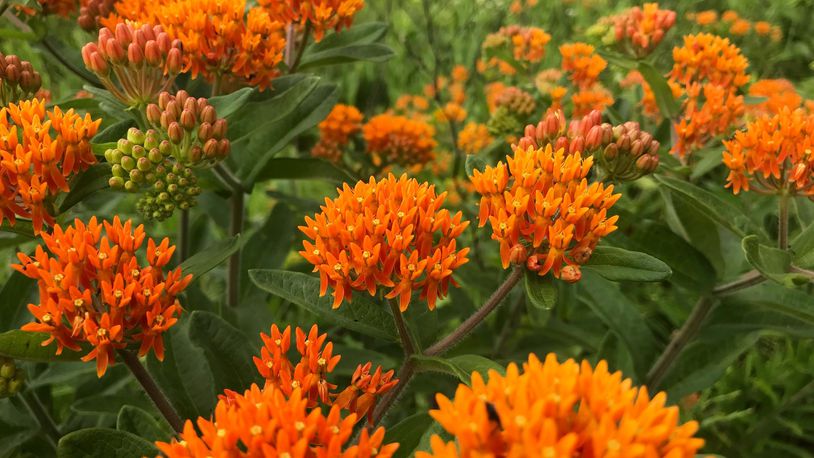April was recently designated as National Native Plant Month with a unanimous bipartisan Senate resolution co-sponsored by Rob Portman, of Ohio, and Mazie Hirono, of Hawaii.
“Our native plants are cornerstones of our environment and crucial to the health and success of pollinators, wildlife and our economy,” said Heather Taylor-Miesle, executive director of the Ohio Environmental Council.
With warmer and longer days, planting is likely on people’s minds, making it an ideal time to consider adding native plants to the yard. Local experts Grace Dietch and Betty Hoevel, of Five Rivers MetroParks, dig into the importance of native plants.
How do native plants benefit wildlife as well as the environment?
“Native plants – trees, shrubs, and perennials – already love our climate and soil and will do very well for years without much care once established. Native plants also rely on native pollinators and will bloom as specific insect pollinators emerge in spring or are active in summer. The insect pollinators provide not only pollination service to the plant but also are food for other insects, birds and animals. The more native plants you have, the more different types of pollinators you will attract, and your garden will be fully alive as a community from spring through frost.
Native plants also serve an important role in carbon sequestration, flood control, and erosion. Deeply rooted native plants can absorb more water and store more nutrients than turf grass or ornamental plants. They are key to maintaining healthy soil, clean water, and they can even cool the air. Native plants really are part of the answer to many of the larger environmental issues that we all face today.”
Why are native plants a good choice for home landscaping?
“Native plants coexist beautifully with non-natives in the landscape and can add seasonal color and interest, height and depth, and increased pollinator activity. Native wildflowers will give you early spring color, while traditional prairie plants can provide a summer treat as they unfold then mature. Larger varieties can be used in the back of the border or as accent plants. Shade varieties will give you a full and interesting color and foliage palate to add to beds of traditional hostas and other shade plants. Native trees and shrubs grown in the required amount of sunlight provide beauty and habitat for pollinators. As mentioned earlier, these plants are already proven in our area, so they grow well and predictably without additional worry once established. Many native plants are also host plants, providing insect pollinators food at various stages of growth and areas to lay eggs.”
How do native plants increase biodiversity?
“Monocultures, such as borders or concentrations of one specific plant, are prime targets for insects and disease and can require endless watering and fertilizing. Native plants are low maintenance and provide nectar and pollen choices for a wide variety of insects and therefore birds that will eat those insects. By planting varieties that will bloom in all the seasons, you provide insects continual chances to feed. The traditional lawn is a food wasteland for pollinators, so expand your beds and add native plants to provide the banquet that these valuable insects need to keep populations growing and flourishing.”
Ready to add some native plants to your yard? Visit the Ohio Native Plant Month website at www.ohionativeplantmonth.org/native-plant-sources to find places to purchase native plants and support Ohio growers.
Contact this contributing writer at djuniewicz@gmail.com.
About the Author
